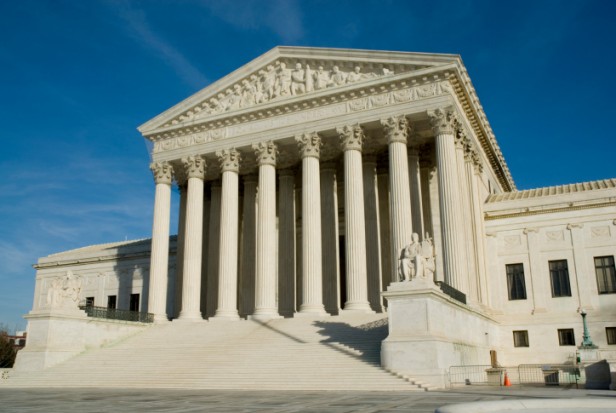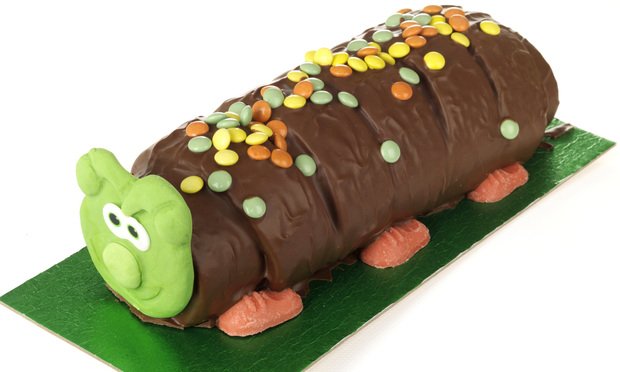Features

How Far Can You Reach? The Territorial Limits of Lanham Act Infringement and False Designation of Origin Claims
On June 29, 2023, the U.S. Supreme Court set new geographic limits for infringement and false designation of origin claims raised under Sections 1114 and 1125(a) of the Lanham Act. Given the global nature of business today, the decision highlights the need for trademark owners to continually reassess and, perhaps, expand their international trademark registration strategy as product lines and brands become more international in scope.
Features

The Power, Perils and Pitfalls of Lookalikes
In April 2021, a food fight broke out between two of the UK's largest supermarkets. Marks and Spencer launched legal action against Aldi over the latter's alleged copy of its signature "Colin the Caterpillar" cake. This article takes a look at the issues surrounding lookalikes, what the English courts have said about them and what can be done by brand owners to protect against the risks they present.
Features

Supreme Court's 'Bad Spaniels' Decision Didn't Overturn Rogers, But …
In a win for trademark holders, the U.S. Supreme Court offered a narrow ruling in the dispute involving "dog toys and whiskey."
Features

Should Foreign Companies Face Lanham Act Sanctions for Trademark Infringement Occurring Abroad?
The U.S. Supreme Court is considering whether the federal Lanham Act should be interpreted so broadly that domestic companies can leverage it to bar trademark infringement by — and seek significant damage awards against — foreign entities operating almost entirely overseas.
Features

The First Amendment and the Lanham Act At the Supreme Court
In March, the Supreme Court heard a blockbuster trademark case with significant implications for trademark law. After argument, reversal seems likely as questioning from the justices suggests that a long-standing precedent is unlikely to survive unscathed. But the Court also indicated concern over the broader implications of this case in the arts, entertainment, and publishing. Here's what you need to know about Jack Daniel's v. VIP Products.
Columns & Departments

IP News
Proving Damages for Trademark Infringement In the Eleventh Circuit
Features

Federal Jury Rejects First Amendment Defense In 'MetaBirkins' NFT Standoff
Leading the charge in thorny IP issues have been cases addressing whether NFT makers who utilize other parties' trademarks can turn to the First Amendment as a defense to trademark infringement. This article analyzes the summary judgment decision that set the stage for trial in Hermes International, and provides some takeaways concerning the legal landscape for NFTs moving forward.
Features

New York Federal Jury Rejects First Amendment Defense In 'MetaBirkins' NFT Standoff
Perhaps no other area in the technology sector — save perhaps the recent explosion of generative AI models — has raised as many thorny intellectual property issues as the proliferation of Non-Fungible Tokens, or NFTs. Leading the charge have been cases addressing whether NFT makers who utilize other parties' trademarks can turn to the First Amendment as a defense to trademark infringement.
Columns & Departments

Podcast: Crypto's Rocky IP Future
Listen in on a post-webinar chat on "The Crypto Landscape: Post-FTX," with Blockchain Legal LLP partner Aaron Krowne and counsel Ali Derie, along with veteran entertainment industry lawyer Eric S. Goldman, about cryptocurrency's rocky recent past (and present) as well as its still-promising, if uncertain, future.
Features

Is Trademark Protection Going to the Dogs?
The Ninth Circuit held in VIP Prods. LLC v. Jack Daniel's Properties that VIP's "Bad Spaniels" dog toy mimicking the appearance of a Jack Daniels whisky bottle was protected expression under the First Amendment. The Supreme Court granted cert in November 2022 to consider the principal question whether humorous use of another's mark on a commercial product should be assessed under Rogers or the traditional multipart test of likelihood of confusion.
Need Help?
- Prefer an IP authenticated environment? Request a transition or call 800-756-8993.
- Need other assistance? email Customer Service or call 1-877-256-2472.
MOST POPULAR STORIES
- The 'Sophisticated Insured' DefenseA majority of courts consider the <i>contra proferentem</i> doctrine to be a pillar of insurance law. The doctrine requires ambiguous terms in an insurance policy to be construed against the insurer and in favor of coverage for the insured. A prominent rationale behind the doctrine is that insurance policies are usually standard-form contracts drafted entirely by insurers.Read More ›
- A Lawyer's System for Active ReadingActive reading comprises many daily tasks lawyers engage in, including highlighting, annotating, note taking, comparing and searching texts. It demands more than flipping or turning pages.Read More ›
- The Brave New World of Cybersecurity Due Diligence in Mergers and Acquisitions: Pitfalls and OpportunitiesLike poorly-behaved school children, new technologies and intellectual property (IP) are increasingly disrupting the M&A establishment. Cybersecurity has become the latest disruptive newcomer to the M&A party.Read More ›
- Abandoned and Unused Cables: A Hidden Liability Under the 2002 National Electric CodeIn an effort to minimize the release of toxic gasses from cables in the event of fire, the 2002 version of the National Electric Code ("NEC"), promulgated by the National Fire Protection Association, sets forth new guidelines requiring that abandoned cables must be removed from buildings unless they are located in metal raceways or tagged "For Future Use." While the NEC is not, in itself, binding law, most jurisdictions in the United States adopt the NEC by reference in their state or local building and fire codes. Thus, noncompliance with the recent NEC guidelines will likely mean that a building is in violation of a building or fire code. If so, the building owner may also be in breach of agreements with tenants and lenders and may be jeopardizing its fire insurance coverage. Even in jurisdictions where the 2002 NEC has not been adopted, it may be argued that the guidelines represent the standard of reasonable care and could result in tort liability for the landlord if toxic gasses from abandoned cables are emitted in a fire. With these potential liabilities in mind, this article discusses: 1) how to address the abandoned wires and cables currently located within the risers, ceilings and other areas of properties, and 2) additional considerations in the placement and removal of telecommunications cables going forward.Read More ›
- Guidance on Distributions As 'Disbursements' and U.S. Trustee FeesIn a recent case from the Bankruptcy Court for the District of Delaware, In re Paragon Offshore PLC, the bankruptcy court provided guidance on whether a post-plan effective date litigation trust's distributions constituted disbursements subject to the U.S. Trustee fee "tax."Read More ›
